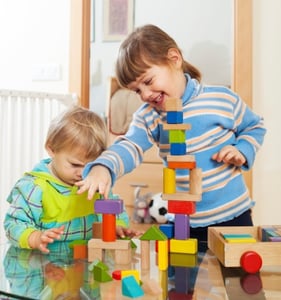
Editor’s Note: There are several ways to approach coding in a mixed-age setting. Teachstone’s official recommendation when observing in multi-age settings is to alternate between two age levels in order to capture the experiences of most children and produce independent scores between the age levels. That being said, we are interested in hearing how other organizations approach observations. Which approach you choose depends on lots of factors, like the purpose of the observation, and time or money constraints.
Sometimes people ask how to do CLASS observations in groups that cross two or more age groups. I’ve been working in a statewide project that is collecting data and giving feedback with family child care providers.
There can be up to three or four age groups in family child care settings: infants, toddlers, preschoolers, and elementary children on school vacation days and afterschool hours. It’s difficult to code when there is such a diverse group of kids to observe. How do you do it?
In my experiences with multi-age settings, I’ve found that it’s best to go with the majority. I include qualitative feedback about all age groups, but those comments aren’t included in the scoring. I score based on which age group is most prevalent during the observation.
Even though it might be difficult to observe in mixed-aged settings, the CLASS lens works well because the age group dimensions connect so well to one another! The Early Language Support dimension in the Infant CLASS tool leads to the dimension of Language Modeling dimension in the Toddler, Pre-K, and K-3 CLASS tools.
Mary Lu Love directs several grant-funded programs through the Institute for Community Inclusion at UMass Boston, teaches early childhood courses at UMass Boston, and works on a number of early childhood collaborations. She has 40+ years of experience teaching and administering in early childhood programs. She has taught in higher education part-time for 20+ years, and helped to develop the early childhood undergraduate degree program at the University of Massachusetts Boston. She is also a long-standing member of the National Association for the Education of Young Children.

